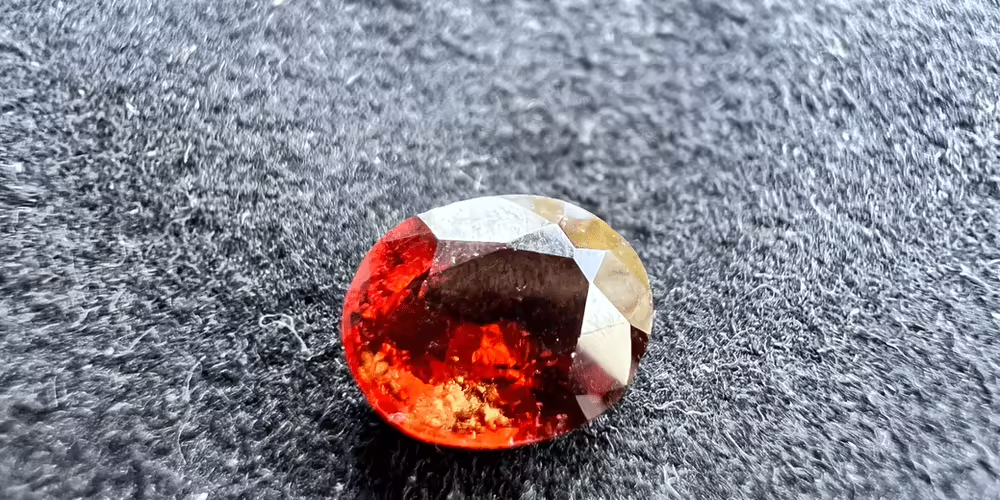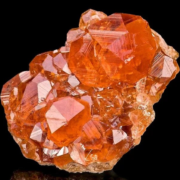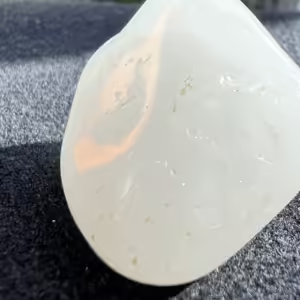Hessonite: Properties, Uses and Virtues
Hessonite: Cinnamon stone
Hessonite, also known as cinnamon garnet or cinnamon stone, captivates with its warm cinnamon tones and symbolic meaning. This mystical gemstone is cherished for its association with vitality and transformation.
Join us as we explore the geological formation of Hessonite, admire the raw beauty of uncut Hessonite crystals and explore its sources around the world.
Discover the historical importance of Hessonite at different times, and delve into its metaphysical properties, considered to be conducive to the flowering of vitality and positive change.

- Hessonite Geological Formation
- Rough Hessonite – Raw Beauty
- Sources – The Worldwide Scope of Hessonite
- Historical Significance of the Hessonite – Through the Ages
- Metaphysical Properties of Hessonite – Illuminating energies
- Varieties of Hessonite
- Colors of Hessonite
- Durability and Wearability of Hessonite
- Hessonite Improvements – Preserving Natural Beauty
- Synthetic Hessonite – La Nature en Laboratoire
- Imitations of Hessonite – Discerning the Authentic
- Hessonite Care – Preserving natural beauty
Hessonite Geological Formation
Hessonite, a variety of Grossular Garnet, forms in metamorphic limestone under specific geological conditions. The interaction of minerals subjected to heat and pressure gives rise to Hessonite in the earth’s crust.
Rough Hessonite – Raw Beauty
The appeal of uncut garnet crystals lies in their captivating visual appeal, illustrated by distinctive geometric shapes. Uncut garnet gemstones have a variety of crystal structures, including icositétrahedral and rhombododecahedral shapes, each reflecting the inherent beauty and crystalline arrangement of the stone.
Exceptionally, Demantoid garnets are generally found in the form of pebbles or rounded crystals.
Rhombododecahedral form :
Rhombododecahedral form : Composed of twelve congruent rhombic faces, this symmetrical, well-defined polyhedron captivates gemologists and gem enthusiasts alike. Recognition of this shape is a crucial identification criterion for garnet, providing valuable information about its unique crystalline arrangement and inherent properties.
Icotetrahedral form :
Another visually intriguing feature found in raw garnet crystals is the icositétrahedral shape. This polyhedron has twenty-four faces, each composed of equilateral triangles. The icostetrahedral structure proudly displays the stone’s inherent symmetry and crystallographic characteristics, allowing gemologists to distinguish and celebrate garnet among its counterparts.
Sources – The Worldwide Scope of Hessonite
Hessonite is found in various parts of the world, mainly in the placers of Sri Lanka. Other sources include Brazil, Tanzania, Pakistan and Canada.
Historical Significance of the Hessonite – Through the Ages
Throughout history, Hessonite has been of significant importance because of its warm cinnamon colour and its mystery.
Although there is little historical research on this gemstone, it is thought to have been cherished for its resemblance to the warm spice to which it owes its name.
Hessonite has adorned contemporary and antique jewellery, adding a touch of enchantment and transformation to various pieces.
Hessonite is one of the nine gems in contemporary Navaratna jewellery.
Metaphysical Properties of Hessonite – Illuminating energies
Hessonite is associated with the promotion of vitality, creativity and positive change. It is thought to stimulate passion and courage, encouraging individuals to embrace change and seize life’s opportunities with vigour.
Hessonite’s connection to the sacral chakra is said to inspire creativity and stimulate personal growth.
Varieties of Hessonite
Hessonite, with its warm, captivating cinnamon tones, is a unique variety within the garnet family, but there are no varieties as such.
Colors of Hessonite
Hessonite’s seductive range of colours captures the warmth of the cinnamon spice. From light cinnamon to deep, rich orange hues, the colours of Hessonite embody the essence of transformation and vitality, reflecting its bewitching beauty.
Durability and Wearability of Hessonite
With a hardness of 6.5 to 7.5 on the Mohs scale, Hessonite offers great durability, making it suitable for many different types of jewellery. Its enduring appeal means that Hessonite jewellery remains a cherished possession for generations.
Hessonite Improvements – Preserving Natural Beauty
Hessonite, like most garnets, is generally valued in its natural state, and treatments are rare. The stone’s warm colours and intrinsic charm need no enhancement to captivate the observer, making Hessonite a gemstone celebrated for its unchanging beauty.
However, it is possible to find fracture fillings or a light coating to improve clarity and surface.
Synthetic Hessonite – La Nature en Laboratoire
Laboratory Hessonite is relatively rare and will rarely be found in jewellery.
Imitations of Hessonite – Discerning the Authentic
Because of its appeal and cultural importance, Hessonite can sometimes be imitated or confused with other gemstones that try to reproduce its warm cinnamon tones.
Buyers should beware of imitations such as Citrine, Glass, Tourmaline and Synthetic Quartz to ensure the authenticity and true value of their Hessonite gemstones.
Hessonite Care – Preserving natural beauty
Nurturing the timeless beauty of Hessonite jewellery involves gentle cleaning with soapy water and a soft brush.
To preserve its warmth and appeal, avoid exposure to aggressive chemicals and sudden temperature changes.
Storing Hessonite jewellery separately from other gemstones prevents scratches and potential damage, preserving its spellbinding beauty for generations to come.
Due to the presence of inclusions, the use of mechanical tools is not recommended.

